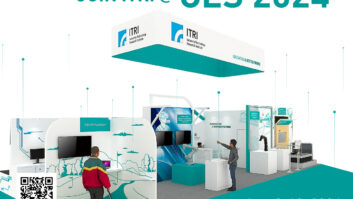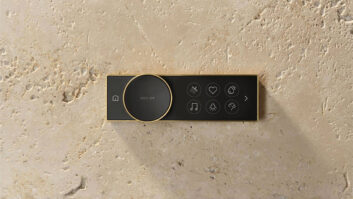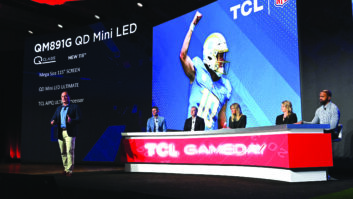Telephones that connect to a computer to provide advanced messaging capabilities, Web phones and video phones are at CES in force, along with a bevy of new 2.4GHz and 900MHz models.
At the same time, Internet telephones that make long-distance calls through the Web, such as Panasonic’s new 900MHz phone using Net2Phone technology, are also making headlines.
One new model is the pcPiper from RFC Distribution of Singapore. The 900MHz digital spread-spectrum USB cordless phone connects to a PC and allows users access to e-mail, voice mail, voice memos and other messages on the PC.
The pcPiper’s handset includes an LCD screen to guide the user through the various functions and directories. The suggested retail price of $249 includes the handset, base, charger and PC software, and shipping is scheduled for February.
“It is also an easy-to-use cordless phone,” said Mayank Sharma, RFC’s group manager, Advanced Products Group. “We designed it to operate like any other cordless phone so users don’t have to learn how to use the phone again.”
Making its official CES debut is the two-line 2.4GHz multi-handset CyberGenie CG2400 from Cygnion, a company that just recently split off from Ericsson. Designed for the SOHO
market, it can operate up to 10 handsets and links to a PC using USB.
The CyberGenie provides advanced features such as a virtual personal digital assistant that answers the phone and sends calls to the appropriate person. The user can also access voice mail, e-mail, faxes and memos at any time by calling into the system from any telephone in the world, the company said.
The CyberGenie uses automatic speech-recognition and text-to-speech engines to read e-mail and voice mail messages. The system will also notify users when they receive messages.
The CyberGenie is shipping now at a suggested retail price of $499. Additional handsets are $129.
In other news, InfoGear’s second-generation iPhone is at CES. The $399 Web phone is available now. It includes a corded phone, touchscreen and keyboard and allows users to communicate by phone or e-mail and to access information on the Internet and conduct transactions such as online shopping and home banking.
The new model features a 56-Kbps modem, a full-duplex speakerphone, a tilt screen, and two lines so users can talk on the phone and send e-mail at the same time. InfoGear offers service at $19.99 a month for unlimited Internet use or $9.99 a month for 10 hours. Users can also use their own POP3 ISPs.
Panasonic, meanwhile, is planning a midyear introduction of its two-line Web phone with a color screen at a retail price of about $600. Two models are planned: an analog version with a 56-Kbps modem, and a second model that operates through the company’s just-announced residential gateway.
Also on the drawing boards at Panasonic is an IP (Internet protocol) telephone system than can operate up to eight handsets at once. The company expects to ship it for about $150 in the second or third quarter.
A new device for managing incoming calls is the Maxx from PremiseNet, formerly known as Matthews Communications.
Developed by Gordon Matthews, inventor of voice mail, the Maxx is a plug-and-play call-management system that handles two lines and 12 extensions. It allows users to check voice mail and intercom while another person is making an outside call, all on the same line. It also answers and screens incoming calls in a number of ways, including a do-not-disturb feature that stops the phone from ringing and sends calls to voice mail.
The system includes a call manager and control modules for each phone and operates with existing wiring and telephones. It ships in February at $799 for a call manager and one module, and additional modules are $169.













